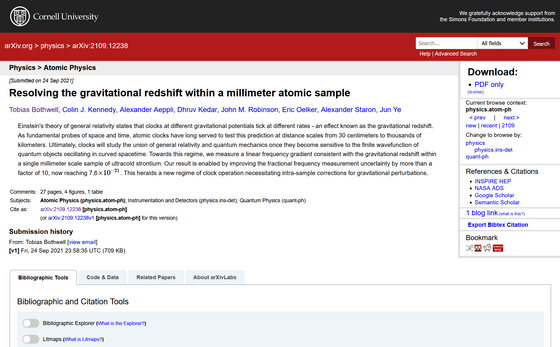Differences in how time progresses depending on the height are observed with an accuracy of 'several mm'

General theory of relativity shows that the flow of time changes when there are heavy objects around. The fact that the farther away from the heavy object of the earth, the faster the time advances,
[2109.12238] Resolving the gravitational redshift within a millimeter atomic sample
https://arxiv.org/abs/2109.12238

General relativity's time dilation was captured across a millimeter | Science News
An Atomic Clock Promises Link Between Quantum World and Gravity | Quanta Magazine
https://www.quantamagazine.org/an-atomic-clock-promises-link-between-quantum-world-and-gravity-20211025/
A research team at the University of Colorado uses an atomic clock composed of 100,000 strontium atoms for measurement. We observed the energy state of strontium atoms installed in the optical lattice formed by laser light, and measured the difference in the way time progresses depending on the altitude.
As a result of analyzing the data for about 90 hours, it was found that the difference in height of 1 mm makes a difference in how the time progresses by 1/10%. 'This is the value expected by the general theory of relativity and is the most accurate record ever performed,' said Science News, a scientific journal.

The paper summarizing this research is in the pre-peer review stage, so the researchers declined to comment. The experiment also attracted attention because the measurement accuracy of atomic clocks has made remarkable progress in recent years, and Victor Flambaum, a theoretical physicist at the University of New South Wales who has not participated in the research, said, 'Dark material. The measurement accuracy of atomic clocks in recent years is so accurate that it could be used to search for. '

Related Posts:
in Science, Posted by log1p_kr







